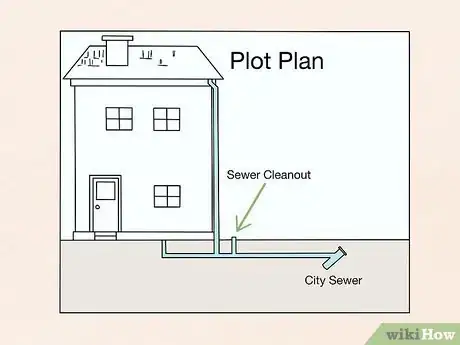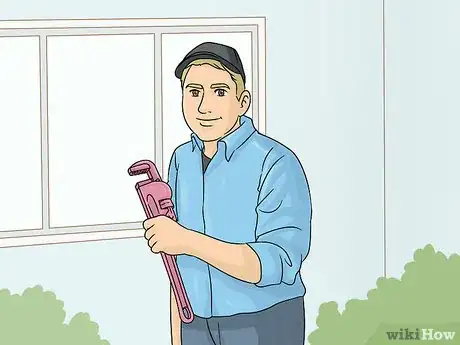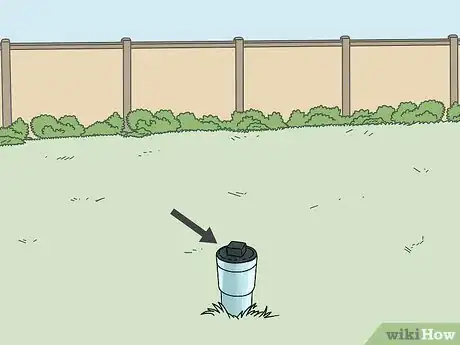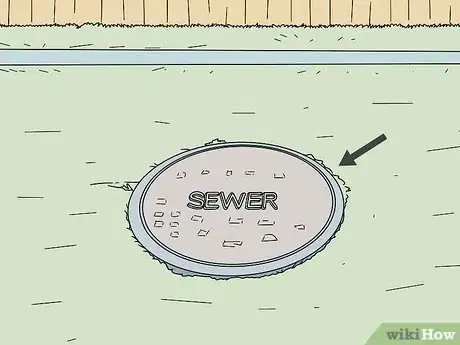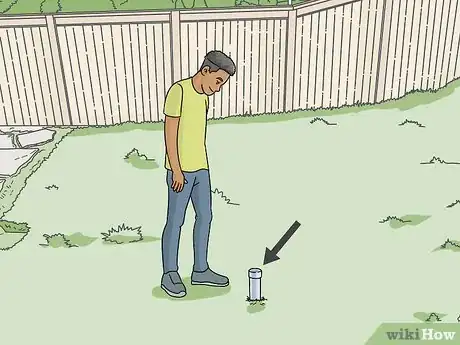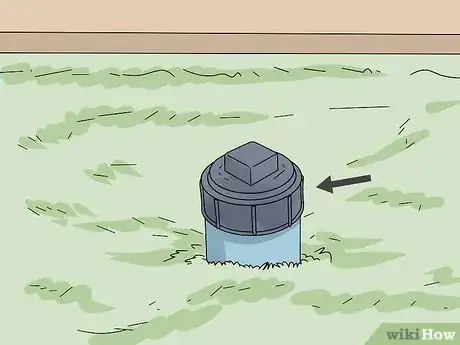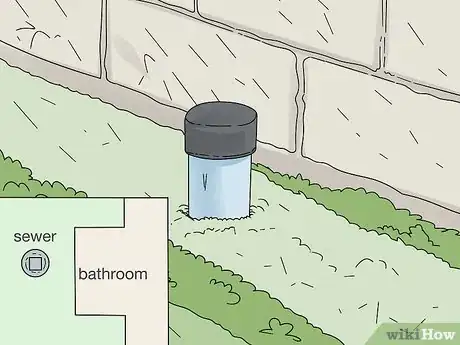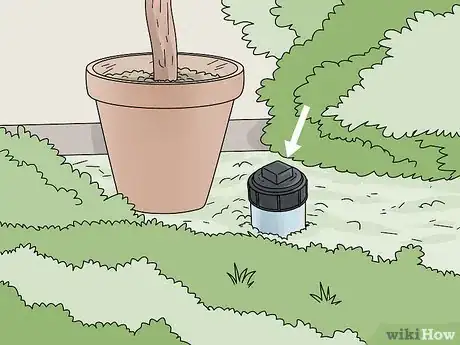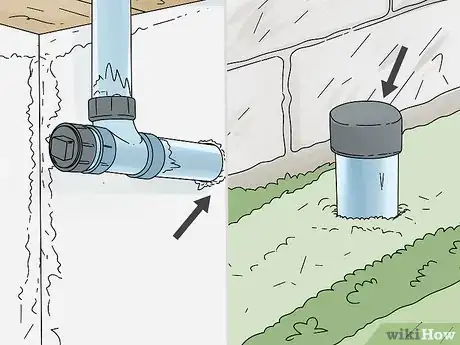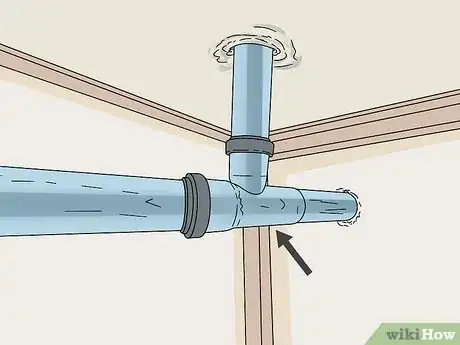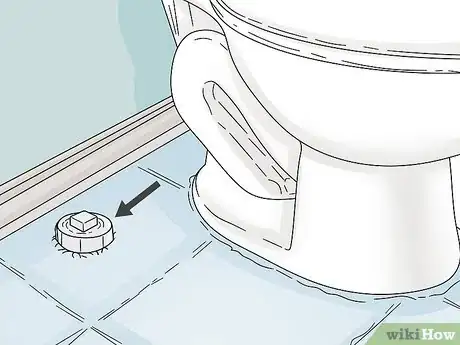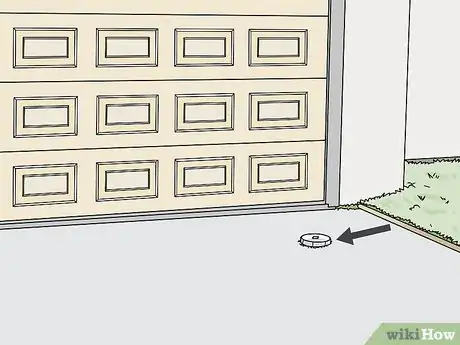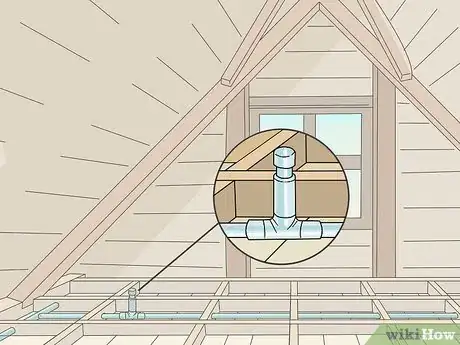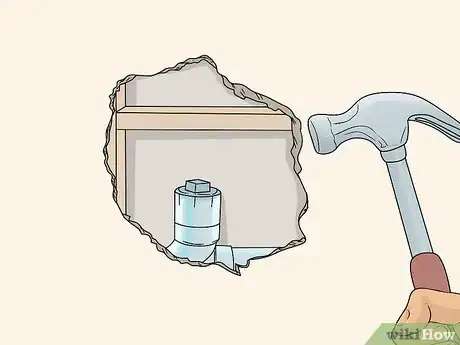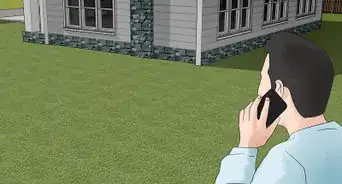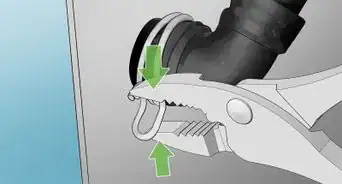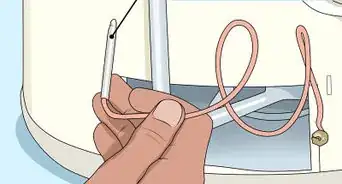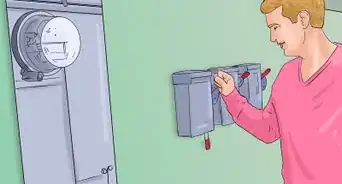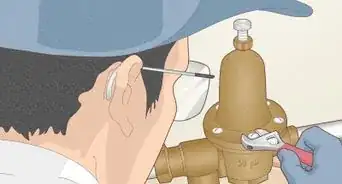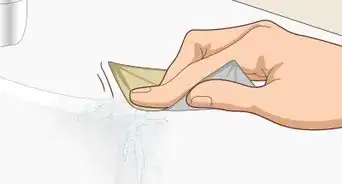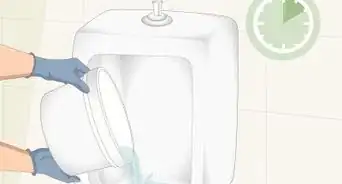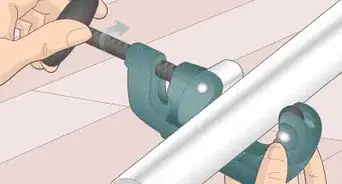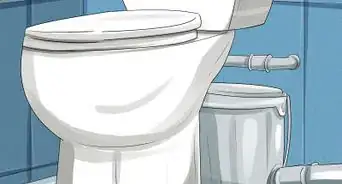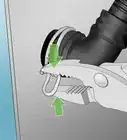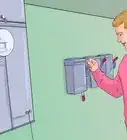This article was co-authored by David Balkan. David Balkan is a Professional Plumber, CEO of Balkan Sewer and Water Main Service, and President of Balkan Sewer and Drain Cleaning. As a hands-on owner of these companies for over 40 years, David is knowledgeable about water service lines, sewers, and drain line issues. David is a Committee Chairman of the Master Plumbers Council and has sat on the Executive Committee of the Sub Surface Plumbers Association of New York for over 30 years. His knowledge and solution-oriented approach contributed to Balkan Sewer and Water Main Service being the largest and most trusted service in New York City and the recipient of the 2017 Angie’s List Super Service Award.
There are 11 references cited in this article, which can be found at the bottom of the page.
This article has been viewed 82,487 times.
Sewer cleanouts are capped pipes that give plumbers an easy way to access sewers when removing clogs. Many home sewer systems come equipped with one or more cleanouts. They are relatively easy to locate, although the exact positioning varies depending on how your home was built. Most of the time, the cleanout will be right outside your front door, but it could also be near a septic tank or even indoors. Some homes may not even have one! If you need help, call a plumber to confirm the location of the cleanout.
Steps
Finding Resources for Locating Cleanouts
-
1Read your home’s plot plans for an easy way to find the sewer cleanout. If you own your home, you may have received a copy of the plot plans. If you don’t have one, contact your local government. The planning or county assessor department typically keeps a database of plans and can get you a copy after you request one. Also, check your government’s website to see if these plans are available to the public online. If your home has a cleanout, the plans will display its location whether it’s indoors or outdoors.[1]
- Subdivision plans could also help. A subdivision plan shows a parcel of land split up into different developments. It is accessible through a government planning office, contractors, and property owners.
-
2Call a plumber for an easy way to find a cleanout. Due to the way building codes change over the years, some homes don’t have sewer cleanouts. It’s a common problem with very old homes, but new homes sometimes don’t have one either. Call a plumber to confirm the problem. If they aren’t able to find a cleanout, talk to them about getting one installed.[2]
- A certified plumber can send a small camera down the main sewer line to find out where it branches off into a cleanout.
- Installing a cleanout is often an inexpensive way to make plumbing maintenance much easier. It can cost as little as $650 USD or as much as $3,500, depending on if the cleanout is installed outside the home or if the installer needs to do a lot of excavating inside your home.
Advertisement -
3Consult contractors and developers if you have hired any recently. If they haven’t seen the plot plan, they may have come across the sewer cleanout. Sometimes workers cover up the sewer cleanout during the construction process. If you are unable to find one, it could be because of recent work done near your home.[3]
- The best people to call are ones that worked outside your home or otherwise came near the sewer line. Call the company you most recently dealt with.
-
4Contact a surveyor or engineer if you still need assistance. Talk to any official that has been around your home recently. If you don’t know who to call, check with your local government’s surveryor’s office. Alternatively, talk to any engineering firms that have been involved in planning or constructing your home.[4]
- Surveyors keep maps of the landscape in your community for legal and safety reasons. They often have access to plot plans.
- Engineers use plot plans when organizing construction projects. If you dealt with a contractor while improving your home, they may be able to refer you to an engineer they consulted during the project.
-
5Contact any title and real estate companies if you used any. These companies often access plot plans in their line of work. In addition, they may have sent someone to inspect your home. Ask them for a copy of the plot plans or at least information on the cleanout location. With any luck, they will be able to assist you at no extra cost.
- You won’t get much help this way unless the company has specifically dealt with your home. Try to contact a company you have dealt with recently.
Locating an External Cleanout
-
1Walk to the septic tank if your home has one. If your home lacks a connection to a municipal sewer line, you will have a septic tank to deal with instead. The cleanout is always near the plumbing leading from your home to the tank. Head toward the tank in your yard, but check the area around your home. The cleanout will usually be next to your home.[5]
- To find the septic tank, look for the vent pipes sticking out of the ground. You could also refer to your home’s plot plans or contact a plumber for assistance.
-
2Head to the main sewer line in the street if your home connects to one. Step out of the front door of your home and walk toward the street. Look for the nearest manhole. Then, check the curb for any mark indicating the position of the sewer line. In many locations, the concrete will have a big “S” for sewer stamped on it. Once you have found that, the cleanout won’t be far behind.[6]
- Outdoor, front yard cleanouts are very common with homes on slab foundations in relatively warm climates. The cleanout is often in the front yard.
- You may also see a “W” for water and a “G” for gas. As long as you are able to find the sewer cleanout, you can ignore these. However, remember their location if you need to dig for the cleanout.
-
3Walk back toward your home to search for the cleanout. You won’t be able to see the main sewer line, so you will have to estimate its location. Starting at the “S,” make a beeline straight for your home. Be on the lookout for the cleanout’s cap sticking out of the ground. It will most likely be somewhere between the curb and the foundation of your home.[7]
- The cleanout may also be labeled with an “S” or an alternative like “C.O.” or “clean out.” It is typically very easy to recognize.
-
4Look for a white or black cap over a pipe. Find a white cap sitting atop a 4 in (10 cm)-wide pipe. Expect the pipe to be hidden, leaving only the cap visible. The cap will also have a square-shaped button or hole on top that makes it very recognizable. If you have plot plans available, use them to figure out where the main sewer line splits off into the vertical cleanout pipe.[8]
- The cap stands out a lot. Your home won’t have any other external pipes like it.
-
5Check the sides of your house near the bathroom. The cleanout could also be positioned close to the biggest source of drainage pipes in your home. Find out which side of your home the bathroom is on, then go check outside for the cleanout cap. It will likely be near your home’s foundation, although you should also walk toward the curb if you don’t see the cleanout right away.[9]
- Side cleanouts can happen if the front yard isn’t close enough to the city’s sewer line. It’s also common in larger homes that have multiple bathrooms.
- If you have multiple bathrooms on the first floor, be sure to check near both of them. The cleanout could be on either side. Your home may even have multiple cleanouts!
-
6Search under any plants near where the cleanout should be. Sometimes homeowners hide the cleanout pipe, which can make finding it a little tricky. Feel around under any grass or bushes for the hard plastic cap on top of the cleanout. You may also end up finding a metal box you need to pull open to access the cleanout.[10]
- Remember that the most common locations for the cleanout are along the main sewer or septic line and near bathrooms. It is typically near your home’s foundation. As long as you search those areas, you can find the hidden pipe.
- In some rare cases, the sewer cleanout may be buried. You will have to dig a little bit in the most likely areas to find it. Dig down about 1 in (2.5 cm), taking care not to hit any utility lines.
Tracking Cleanouts Inside Your Home
-
1Follow the drainage pipe in your home to find the cleanout. Check your basement or crawlspace, if you have one, to see where the utility pipes exit your home. Follow the line to see if it has a capped cleanout pipe near it. The line will often be right outside your home, but it could also be on the inside. The cleanout is usually right next to the foundation of your home, so look for a plugged pipe coming out of the floor.[11] [12]
- Note that following the main sewer line in your home can be tricky. Try following the drainage pipes from any nearby utilities. If the pipes cross into the walls, estimate their location or search outside for the main sewer line.
- In colder regions, such as in Canada, cleanouts are often built inside homes to prevent them from freezing during the winter.
-
2Check for a pipe with a cap over it. Sewer cleanouts typically have a white or black cap. The cap is often threaded with a raised square in the center. Cleanouts inside your home tend to be attached to other pipes, so check for any capped off dead ends. The dead end may be the cleanout you’re looking for.[13]
- When you look in the basement, for example, the cleanout could be on a Y or T-shaped pipe fitting.
- Cleanouts in bathrooms and near floor drains are often similar to ones located outdoors.
-
3Search near toilets in your home if you can’t find the cleanout. Check every bathroom in your home. If the cleanout is in one of them, it will be close to the toilet. Look for a small but noticeable pipe sticking out of the floor. It is recognizable by its black or white cap and the fact that it doesn’t appear to connect to anything.[14]
- If your home is set up this way, there is a chance it includes multiple cleanouts. Check other bathrooms and ground drains as well.
- Homes with slab foundations, including those in warmer climates, can have bathroom cleanouts. It happens sometimes in older homes, especially if there isn’t a good spot to hide the cleanout outdoors.
-
4Inspect the garage or utility areas if your home has them. Any areas that have a floor drain could also have a sewer cleanout. Check the floor first for a capped pipe. Search near the drain, then move onto storage areas, such as closets or other places where a builder might hide something not meant to be seen.[15]
- Since the sewer cleanout has to be near plumbing, you likely won’t find it in spots that are far away from drains. For example, you don’t have to spend much time looking through a closet in a distant hallway unless there is a drain nearby.
- Utility cleanouts happen when there isn’t room in the basement or bathroom. These cleanouts are often secondary and meant to help plumbers access a specific part of the sewer system.
-
5Check the attic in case you can’t find the drain elsewhere. In some rare cases, the sewer cleanout could be in the attic. If you have an attic, look near any visible sewer vent pipes running to the roof. The cleanout may be situated on a “Y” or “T-shaped” pipe fitting. The free end of the fitting is often a sewer cleanout.[16]
- If you have plumbing in the attic, remember to inspect it for the sewer cleanout.
- Attic cleanouts are rare but can be spotted in old homes. Your home likely won’t have a cleanout there unless it also has a bathroom or other plumbing there.
-
6Open up the wall to access the cleanout if it is in there. Occasionally sewer cleanouts end up getting covered up during remodeling. If you suspect your sewer cleanout is in the wall, you would need to get behind the wall to reach it. Either cut open the wall or knock a hole through it with a hammer.[17]
- You’re better off letting a plumber confirm the location of the cleanout and find a way to access it. Trying to get to it on your own could cause serious damage to your home if you are not careful.
- The cleanout usually will not be in the wall. It happens sometimes in older homes that have had remodeling work done, similar to how landscaping work can lead to an outdoor cleanout becoming hidden.
Expert Q&A
-
QuestionWhere will the cleanout be in relation to all of my pipes? Can I follow the pipes to find it?
 David BalkanDavid Balkan is a Professional Plumber, CEO of Balkan Sewer and Water Main Service, and President of Balkan Sewer and Drain Cleaning. As a hands-on owner of these companies for over 40 years, David is knowledgeable about water service lines, sewers, and drain line issues. David is a Committee Chairman of the Master Plumbers Council and has sat on the Executive Committee of the Sub Surface Plumbers Association of New York for over 30 years. His knowledge and solution-oriented approach contributed to Balkan Sewer and Water Main Service being the largest and most trusted service in New York City and the recipient of the 2017 Angie’s List Super Service Award.
David BalkanDavid Balkan is a Professional Plumber, CEO of Balkan Sewer and Water Main Service, and President of Balkan Sewer and Drain Cleaning. As a hands-on owner of these companies for over 40 years, David is knowledgeable about water service lines, sewers, and drain line issues. David is a Committee Chairman of the Master Plumbers Council and has sat on the Executive Committee of the Sub Surface Plumbers Association of New York for over 30 years. His knowledge and solution-oriented approach contributed to Balkan Sewer and Water Main Service being the largest and most trusted service in New York City and the recipient of the 2017 Angie’s List Super Service Award.
Professional Plumber & CEO of Balkan Sewer & Water Main You have to look at a drain system almost as if it's a tree with branches coming off of the trunk. At the bottom of each trunk of the drain system is usually supposed to be a cleanout. If you have multiple fixtures tying into one line that goes down, say from the second floor to the first floor to a basement, there should be a cleanout for that.
You have to look at a drain system almost as if it's a tree with branches coming off of the trunk. At the bottom of each trunk of the drain system is usually supposed to be a cleanout. If you have multiple fixtures tying into one line that goes down, say from the second floor to the first floor to a basement, there should be a cleanout for that.
Warnings
- Opening a sewer cleanout on your own is a messy process. Step back after opening the cap to let out any trapped water and gas.⧼thumbs_response⧽
References
- ↑ https://www.bobvila.com/articles/how-to-find-property-lines/
- ↑ https://www.youtube.com/watch?v=Tk4bMDUhSas&feature=youtu.be&t=73
- ↑ http://www.acmehowto.com/plumbing/sewer-clean-out.php
- ↑ https://www.bobvila.com/articles/how-to-find-property-lines/
- ↑ http://www.acmehowto.com/plumbing/sewer-clean-out.php
- ↑ https://www.suisun.com/sewer-laterals/
- ↑ https://www.suisun.com/sewer-laterals/
- ↑ http://www.lakecountyca.gov/Government/Directory/Special_Districts/Useful_Information/Sewer_Lateral_Cleanout.htm
- ↑ https://www.youtube.com/watch?v=1HzhZUefxDM&feature=youtu.be&t=127
- ↑ https://iowadot.gov/erl/current/US/content/4010_203.pdf
- ↑ https://www.bobvila.com/articles/toilet-gurgles/
- ↑ David Balkan. Professional Plumber & CEO of Balkan Sewer & Water Main. Expert Interview. 30 March 2021.
- ↑ http://www.lakecountyca.gov/Government/Directory/Special_Districts/Useful_Information/Sewer_Lateral_Cleanout.htm
- ↑ https://www.youtube.com/watch?v=Iv-v3TwDWTc&feature=youtu.be&t=60
- ↑ https://www.youtube.com/watch?v=Iv-v3TwDWTc&feature=youtu.be&t=39
- ↑ http://www.acmehowto.com/plumbing/sewer-clean-out.php
- ↑ http://www.acmehowto.com/plumbing/sewer-clean-out.php
- ↑ https://www.bobvila.com/articles/toilet-gurgles/
- ↑ https://www.bobvila.com/articles/toilet-gurgles/
